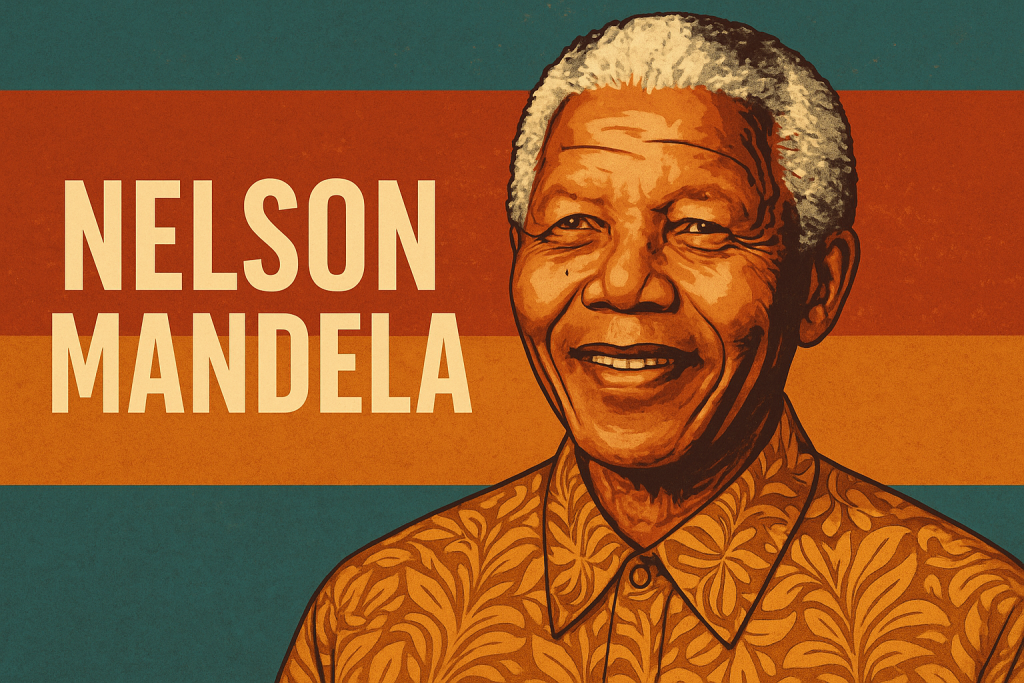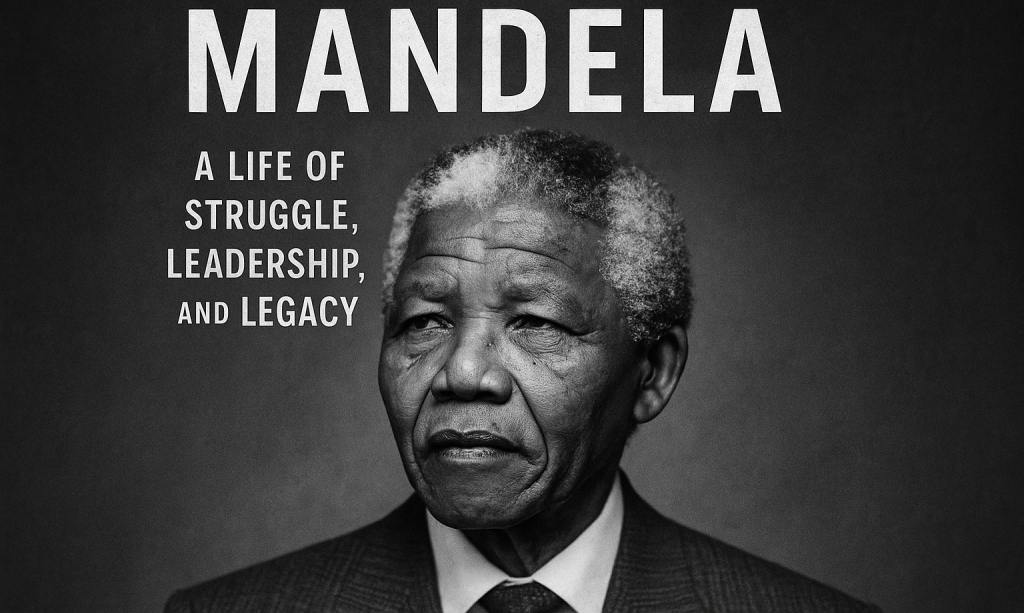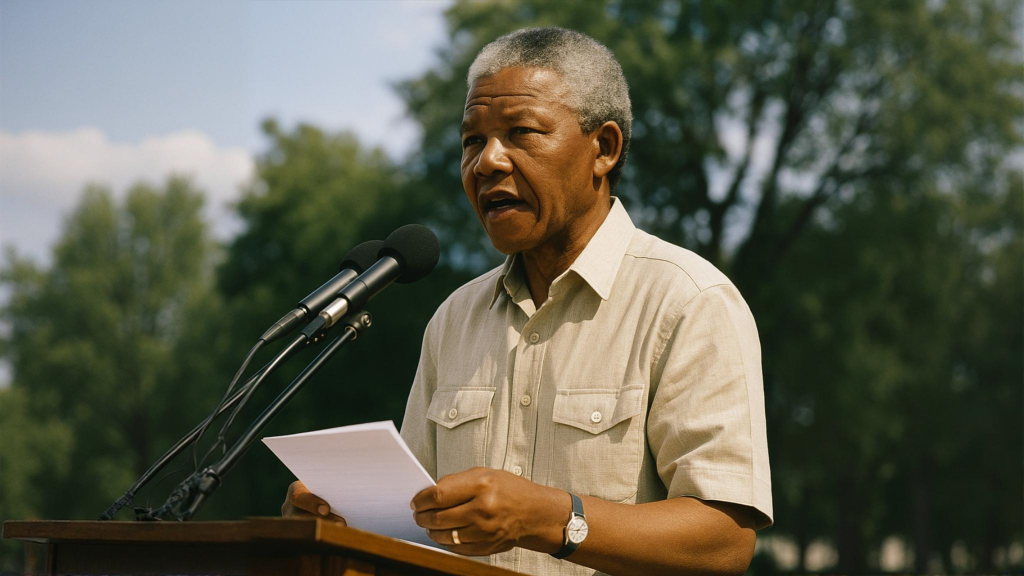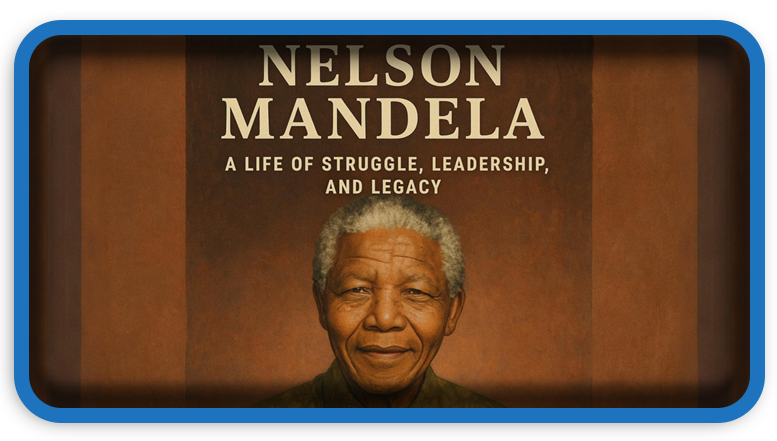⏲️ Estimated reading time: 6 min
Nelson Mandela: Life, Struggle, and Legacy of a Global Icon. Nelson Mandela, born in South Africa, became a global symbol of justice and resilience. His leadership against apartheid and his role in unifying a divided nation earned him worldwide respect and the Nobel Peace Prize.
Nelson Rolihlahla Mandela was born on July 18, 1918, in Mvezo, a small village in the Eastern Cape of South Africa. Over the decades, he became a leader celebrated around the globe. His life reflected courage, determination, and an unwavering dedication to equality and human rights. Mandela fought against apartheid, a brutal system of racial segregation in South Africa. He spent 27 years in prison, but never gave up his vision of freedom. His struggle inspired millions. In recognition of his efforts, Mandela received the Nobel Peace Prize and became a symbol of unity and peace worldwide.
Early Life and Education
Mandela belonged to the Thembu royal family. His Xhosa birth name, Rolihlahla, translates roughly to “troublemaker” or “pulling the branch of a tree.” His father, Gadla Henry Mphakanyiswa, served as a local chief. When Mandela was still a child, his father passed away. This loss led Mandela to live with Chief Jongintaba Dalindyebo, the Thembu regent. This move changed his life. He learned about leadership and the customs of the royal court.
Mandela valued education deeply. He attended a series of mission schools and eventually enrolled at Fort Hare University. This institution was one of the few places where black South Africans could pursue higher education. Mandela began working toward a Bachelor of Arts degree. However, after joining a student protest, he was expelled. Later, he moved to Johannesburg, where he completed his degree through correspondence at the University of South Africa.
Political Awakening in Johannesburg
While in Johannesburg, Mandela worked as a law clerk. He became more involved in the city’s political scene and joined the African National Congress (ANC) in 1944. This organization worked to defend the rights of black South Africans and end racial discrimination.
Mandela helped form the ANC Youth League. He and other young members believed in more aggressive action. In 1948, the National Party came to power and began enforcing apartheid. This system made racial segregation official and extremely harsh.
Mandela’s passion and determination grew. He led protests, strikes, and civil disobedience campaigns. His voice began to echo across South Africa, calling for justice and change.

Shifting Strategies: From Protest to Resistance
For years, Mandela pushed for peaceful change. But the government met peaceful protests with violence. The 1960 Sharpeville Massacre, where police killed 69 unarmed protestors, marked a turning point. Mandela realized that peaceful efforts alone might not be enough.
In 1961, Mandela co-founded Umkhonto we Sizwe (MK), the ANC’s armed wing. This group used sabotage to target infrastructure linked to apartheid, avoiding loss of life whenever possible. Mandela hoped that these actions would pressure the regime to negotiate.
Arrest and the Rivonia Trial
In 1962, authorities arrested Mandela. He faced charges of inciting strikes and leaving the country illegally. After receiving a five-year sentence, he was later charged again in the famous Rivonia Trial. Along with other ANC leaders, he stood accused of sabotage and conspiracy to overthrow the government.
At the trial, Mandela delivered a powerful speech. He spoke openly about his ideals and declared he was ready to die for a democratic South Africa. In 1964, the court sentenced him to life in prison. He began serving time on Robben Island.
Life in Prison and Global Recognition
Mandela spent 18 years on Robben Island, living in harsh conditions. Despite the physical and emotional toll, he continued to lead. He taught fellow prisoners and debated politics. His dignity earned him respect, even from guards.
Over time, the global community began to support Mandela. International movements called for his release and demanded an end to apartheid. Celebrities, governments, and activists united under the banner “Free Nelson Mandela.”

Release and the Fall of Apartheid
In the late 1980s, South Africa began to change. Economic struggles and global pressure pushed the government to consider reforms. In 1990, President F.W. de Klerk released Mandela from prison. Mandela walked free after 27 years behind bars.
He quickly returned to politics. As the head of the ANC, Mandela negotiated with the government. These talks led to the peaceful dismantling of apartheid. In 1993, Mandela and de Klerk received the Nobel Peace Prize for their efforts.
Presidency and Reconciliation
In 1994, South Africa held its first multiracial elections. Nelson Mandela became the country’s first black president. His victory symbolized the dawn of a new era.
Mandela chose reconciliation over revenge. He created the Truth and Reconciliation Commission (TRC). This body gave victims a platform to tell their stories. It also allowed perpetrators to confess their crimes in exchange for amnesty. The TRC aimed to heal, not divide.
During his presidency, Mandela worked to unite South Africans. He promoted education, economic development, and national pride. He famously used the 1995 Rugby World Cup to rally the country, showing support for a sport traditionally linked to the white minority.
Retirement and Continued Influence
Mandela stepped down in 1999, choosing not to seek a second term. He believed in democratic principles and led by example. Even after leaving office, he remained active. He worked on global issues, including HIV/AIDS awareness and peace negotiations in conflict zones.
Mandela launched the Nelson Mandela Foundation. This organization focuses on social justice, dialogue, and development. He continued to meet world leaders and advocate for human dignity.
Honors and Recognition
Throughout his life, Mandela received over 250 awards. These included the U.S. Presidential Medal of Freedom, the Bharat Ratna (India’s highest civilian award), and honorary citizenships from multiple countries. Universities awarded him dozens of honorary degrees.
Public spaces, roads, schools, and institutions across the world bear his name. July 18th, his birthday, is now recognized as Mandela Day a global call to service in his honor.
Death and Enduring Legacy
Nelson Mandela passed away on December 5, 2013, at age 95. The world mourned his loss. Leaders from every continent paid tribute. Millions celebrated his life and legacy.
Mandela taught that forgiveness is stronger than hate. He showed that justice can overcome oppression. His story remains one of humanity’s most powerful examples of integrity and hope.
Everlasting Influence
Mandela’s legacy goes beyond South Africa. His life inspires movements for justice across the globe. Activists fighting for democracy, equality, and peace often cite Mandela’s example.
He proved that even in the darkest times, leadership, empathy, and perseverance can change the world. From his childhood in rural South Africa to the presidency, Mandela’s journey offers lessons in courage and compassion.

🔔 For more tutorials like this, consider subscribing to our blog.
📩 Do you have questions or suggestions? Leave a comment or contact us!
🏷️ Tags: Nelson Mandela, apartheid, South African history, Nobel Peace Prize, ANC, Truth and Reconciliation Commission, civil rights, Mandela presidency, South Africa, historical biography
📢 Hashtags: #NelsonMandela, #Apartheid, #SouthAfrica, #HumanRights, #MandelaLegacy, #ANC, #TruthAndReconciliation, #GlobalLeader, #PeaceAndJustice, #MandelaDay
Only logged-in users can submit reports.
Discover more from HelpZone
Subscribe to get the latest posts sent to your email.

